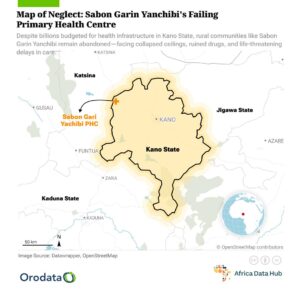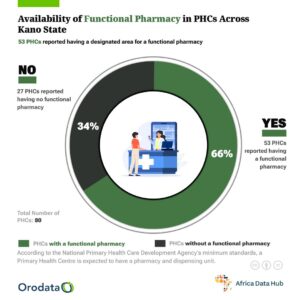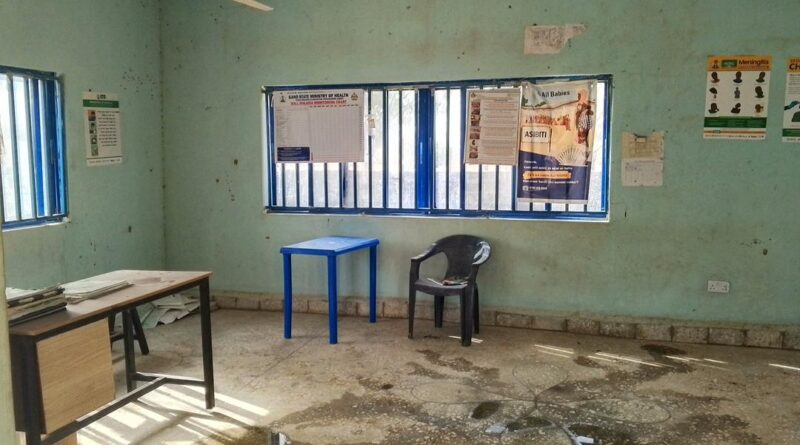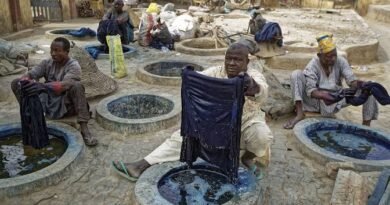When It Rains, Healthcare Stops: How a Collapsing Ceiling Endangers Lives at Sabon Garin Yanchibi’s Only PHC
By Mariya Shuaibu Suleiman
Each time the skies darken over Sabon Garin Yanchibi, a small rural community in Tsanyawa Local Government Area of Kano State, fear settles in. Not the ordinary fear of rain ruining market days or soaking laundry, no. This is a deeper fear. The kind that grips expectant mothers, the sick, and health workers alike, because here, rain means one thing: the only Primary Health Centre (PHC) becomes a hazard zone.

This facility, once seen as a beacon of public health for the community, now carries a different reputation. Its ceilings leak heavily. Water seeps through roof cracks and pools across the clinic floor. In some rooms, the ceiling has partially caved in. Drugs are often ruined. Patients, especially women and children, are turned back or rushed away mid-treatment to faraway facilities.
“We Can’t Stay When It Rains”
During my visit, I watched as Community Health Extension Worker (CHEW) scrambled to shift mattresses away from flooded sections of the delivery room. The facility-in-charge, Mr. Abubakar Ahmad, looked exhausted. He comes in from a distant community every day to open the clinic, as there’s no accommodation for staff here.
“When it starts raining, we can’t stay inside the building. We rush outside with the patients because water pours from the ceiling like a pipe burst,” he said.
At night, the situation is worse. The PHC remains closed after dark, not just because of safety, but because there is no electricity and no provision for overnight duty. Women in labour are forced to wait till morning or embark on dangerous trips to distant facilities. It is a silent crisis with no headlines.
“We Almost Lost Her”
A young mother, simply identified as Aisha Nasiru, sat with her child near the health post on the morning I visited. Her voice shook as she recounted her experience from just weeks ago.
“She started feeling pain late at night but the hospital was closed,” said her husband, Mal.Nasiru Mudi who had accompanied her. “We had to use a motorcycle to reach another village. The road was muddy and we fell twice.”
They arrived at a small clinic far from home just in time. “We almost lost her,” he added quietly.
Aisha’s story is not unique. Several other women told me they had either been referred during rainfall or abandoned care entirely until the weather cleared.
Rainwater, Ruined Mattresses
In the clinic’s main storage area, health workers showed me the rusted soaked mattresses and soaked cartons of some drugs.
“When rain falls overnight, we come in to meet a mess,” one staff explained. “We try to salvage what we can, but many items are already damaged.”
A Community Left Behind
One of the village community leader that preferred to be anonymous, said they have reported the case, made calls and pleased with the Tsanyawa local government but nothing has changed.
“The government knows our situation but maybe because we are a rural village, they don’t see us.”
The PHC was once considered a “model” project for the area. But now, even the signage has faded. Paint peels from the wall. Doors hang loose from their hinges.
“People now use herbs or go to chemists,” said one resident. “Some women even deliver at home. Is this the healthcare they promised us?”
Budgeted But Neglected

Between 2020 and 2023, the Kano State Government allocated over ₦14.7 billion for capital projects through the Kano State Primary Healthcare Management Board. This included ₦2.1 billion in 2021, ₦3.4 billion in 2022, and ₦4.1 billion in 2023, with another ₦5.1 billion earmarked in 2024. The budgets were meant for building new PHCs, renovating old ones, and purchasing critical medical equipment.
However, despite these impressive figures on paper, official government budget performance reports reveal a stark reality: not a single naira was spent on capital projects during this period. In 2023, while ₦1.509 billion was budgeted for the construction of health centres, none of it was released. Out of ₦3.6 billion earmarked for rehabilitation that same year, only ₦24.87 million, just 0.7 percent was actually disbursed.
This massive gap between what was promised and what was delivered helps explain why facilities like the one in Sabon Garin Yanchibi remain in such dire condition. The leaking roofs, the lack of electricity, the absence of water and accommodation, these are not just signs of decay. They are symptoms of systemic neglect.
When contacted, a senior official from the Kano State Primary Healthcare Management Board, who asked not to be named, acknowledged that some rural facilities were in “critical condition” but said rehabilitation plans were “ongoing,” although he did not provide a timeline for repairs in Sabon Garin Yanchibi.
The Tsanyawa Local Government Health Department did not respond to multiple requests for comment at the time of filling this report.
A Clock Ticking
As the rainy season deepens, so does the risk. Mothers will keep going into labour. Children will keep falling sick. And health workers, already stretched thin, will keep risking their safety to serve their community.
If urgent repairs aren’t made, this PHC could become completely unusable by the peak of the rainy season. What’s unfolding in Sabon Garin Yanchibi is not just a story about a broken ceiling, it’s about broken systems, broken promises, and lives at the mercy of the rain.
Mr. Ahmad pleads with the Kano State government to come to their rescue.
“I am begging the Kano State Government to intervene in this matter. It is an urgent matter before we started losing our people.”

This story was produced for the Frontline Investigative Program and supported by the Africa Data Hub and Orodata Science.





